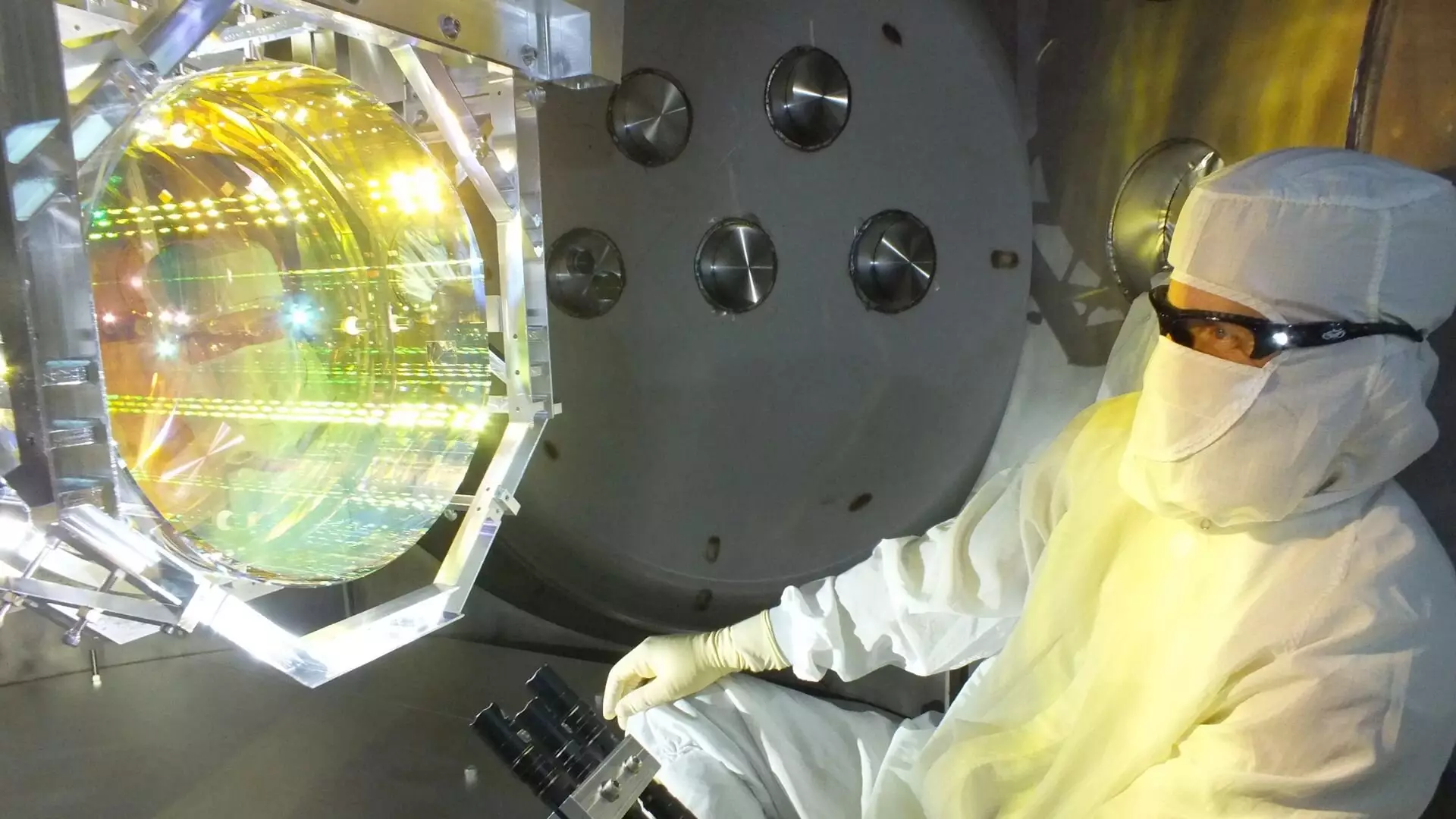Dark matter is one of the most profound mysteries of modern astrophysics. This elusive substance, constituting approximately 30% of the universe’s observable matter, remains undetectable through conventional electromagnetic means, such as light. Instead, scientists infer its existence through gravitational effects on visible matter. Phenomena like the orbital movements within galaxy clusters and the rotation speeds of galaxies hint at an unseen mass exerting gravitational influence. Despite extensive research across multiple disciplines, the fundamental nature of dark matter continues to evade discovery, sustaining an intense interest within the scientific community.
Recent Advances with Scalar Field Dark Matter
A notable advancement in this field was recently published in the journal *Physical Review Letters* (PRL). Led by Dr. Alexandre Sébastien Göttel from Cardiff University, the study proposes a paradigm shift in how researchers could detect dark matter by engaging gravitational wave detectors like LIGO (Laser Interferometer Gravitational-Wave Observatory) to probe the existence of scalar field dark matter. This specific type of dark matter is hypothesized to consist of ultralight scalar bosons—particles characterized by their lack of intrinsic spin—allowing them to exist in wave-like formations instead of discrete particles. Understanding such dark matter candidates could be critical in unlocking the enigma of why the universe behaves as it does.
Gravitational Waves: A Tool for Discovery
Gravitational wave detectors are sophisticated instruments designed to sense minute distortions in spacetime caused by the passing of gravitational waves, ripples produced by massive astronomical events such as black hole mergers. LIGO’s set-up involves two perpendicular arms, each spanning four kilometers, wherein laser beams are directed and manipulated to detect alterations in interference patterns caused by these undulating waves.
Dr. Göttel’s transition from particle physics to gravitational wave data analysis illustrates a growing trend of interdisciplinary collaboration aimed at addressing complex scientific questions. By leveraging the capabilities of LIGO, researchers can potentially reveal new insights into the nature of dark matter and its pulsating effects, epitomizing the innovative approaches that characterize contemporary astrophysics.
The mechanics of scalar field dark matter allow it to interact weakly with conventional matter and light. Because of its wave-like properties, it is theorized that periodic oscillations in the scalar field could induce subtle reverberations within LIGO’s apparatus. During his discussion on the study, Dr. Göttel outlined the theoretical framework used to analyze these interactions. The research considers the fluctuation of the dark matter field alongside electromagnetic fields, postulating that the oscillations would modify fundamental constants governing electromagnetic interactions, subsequently impacting LIGO’s readings.
Dr. Göttel remarked, “At an atomic level, the interaction of the dark matter field is not only profound but fundamentally alters the interactions we expect to see in our measurements.” This integration of theoretical physics with advanced experimental methods denotes a forward-thinking approach to dark matter detection and exploration.
Employing data from LIGO’s third observation run, the research team extended their observations to a range of 10 to 180 Hertz. This lower frequency spectrum allowed them to improve sensitivity beyond previous studies, which primarily focused on beam splitters. By incorporating the influence of dark matter oscillations on both beam splitters and mirrors, the researchers unveiled a comprehensive model demonstrating potential oscillatory signatures expected in the presence of scalar field dark matter.
Using a technique known as logarithmic spectral analysis, they meticulously searched for anomalies indicative of dark matter. Although the research team did not find compelling evidence of scalar field dark matter, their endeavor significantly enhanced our understanding. They achieved an impressive increase in upper limits concerning the coupling strength between dark matter and LIGO’s components—an improvement by a factor of 10,000 within the specified frequency range.
This groundbreaking study not only sets the stage for future discoveries but also paves the way for next-generation gravitational wave detectors that could surpass indirect search methods for dark matter. The predictions concerning optical changes—such as adjustments to mirror thickness—underpin the potential for profound advancements in detection capabilities.
Dr. Göttel concluded optimistically, suggesting that with continued refinement of these methods, researchers could potentially eliminate entire categories of scalar dark matter theories through direct investigations. As we stand on the cusp of new astronomical revelations, the fusion of gravitational wave astronomy with dark matter research exemplifies the future trajectory of our quest to understand the universe’s deepest secrets. With each new study, we move closer to deciphering this cosmic puzzle, embracing the challenges and triumphs that accompany scientific inquiry.


Leave a Reply